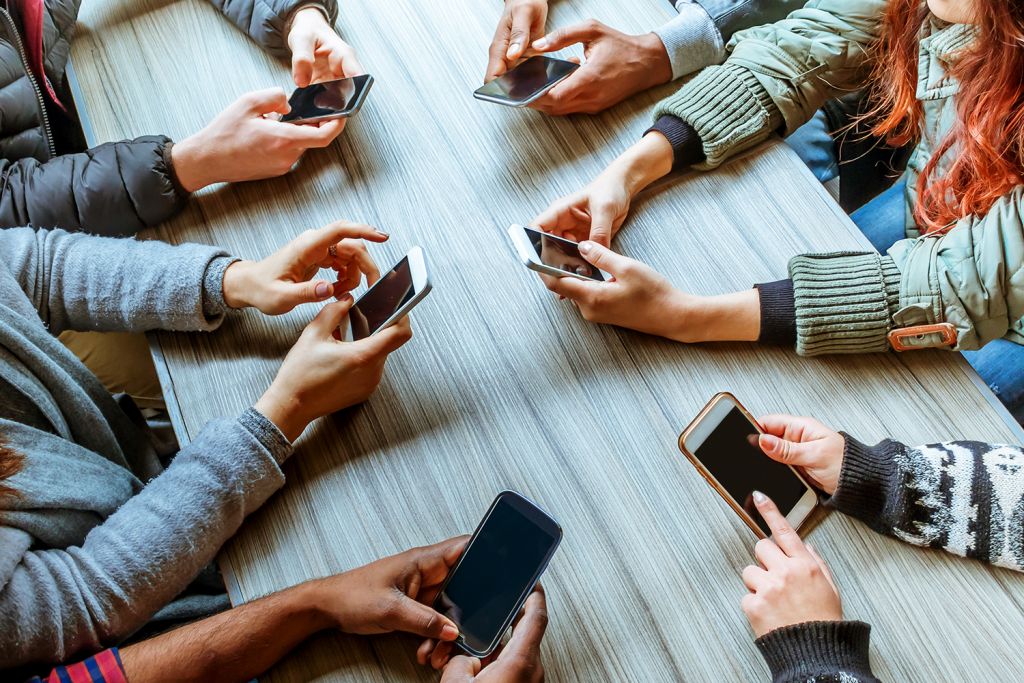The dark mode of the phone may be ideal for those with sensitive eyes is true. With less brightness, a dim screen tends to make users force their eyesight less, which can prevent headaches and other problems. An important question to ask, however, is: can dark mode really protect users from health damage?
Prolonged use of technology has led fans, smartphones and tablets to seek more information about the damage that screens can cause to their health. Blue light, part of the spectrum emitted by these devices, has been linked to illnesses ranging from depression to cancer and are responsible for damaging the daily lives of millions and even causing them to die.
Naturally, the search for solutions to this problem began along with its discovery. They include special glasses (although there is no scientific evidence that they protect against blue light) and even the use of sunscreen, since less use of devices such as smartphones does not seem to be an alternative (at least not yet). ).

Another well-known “solution”, as stated at the beginning of this article, is the use of the phone’s dark mode, which makes the text on the screen white and the background black, unlike the factory settings of smartphones. It is a fact that this mode, besides tiring the eyes, can also help to save the battery of the smartphone. However, according to experts, it may not make much of a difference to health. There is also no data that sufficiently disagrees about the health benefits of dark mode and greater comfort when using a smartphone.
It is also known that there are settings that decrease exposure to blue light by emitting more shades of red and yellow (on iPhones, for example, they can be accessed from the “Accessibility” menu). However, according to recent research, yellowish tones, while causing less damage to eyesight, can impair sleep and should not be used at night.
Why doesn’t dark mode really protect against blue light?
It is actually the spectrum of light (not its brightness) that causes the blue light to do so much damage. So instead of simply turning on dark mode, it’s worth changing the screen color settings. However, any of the settings used on your smartphone will cause damage to your eyesight or sleep. Thus, it is critical that the user strive to reduce smartphone usage, as difficult as this task may seem – especially before bedtime, as the blue light can also keep the brain alert and disrupt sleep. This is because this is the only way to actually reduce the damage that can be caused by the device screen.

The fact is that social networks, which are largely responsible for smartphone addiction, are designed precisely to maximize users’ interest in their screens, as they contribute to a “sense of reward” that can be addictive to the brain ( through likes, content with which the user identifies, sense of belonging, among other factors). While we have fun looking at our computer or smartphone screen, blue light can compromise our skin, screen clarity can impair our vision, and other factors can compromise our mental health.
Other health issues caused by smartphone overuse
Excessive use of smartphones is also related to health problems such as back and neck pain, joint pain, muscle wasting, vision damage and also psychic problems such as anxiety and depression, which are caused by the feeling of being constantly “Missing something” that has been posted on networks, which causes the user to constantly check their device. Secondly, depression can also be caused by a constant comparison with other people’s lives through content posted on networks, as well as by the substitution of personal for virtual interactions.
If you have identified any of the above problems, it is worth looking for an orthopedic doctor and, in cases of psychic disorders, a psychologist.
